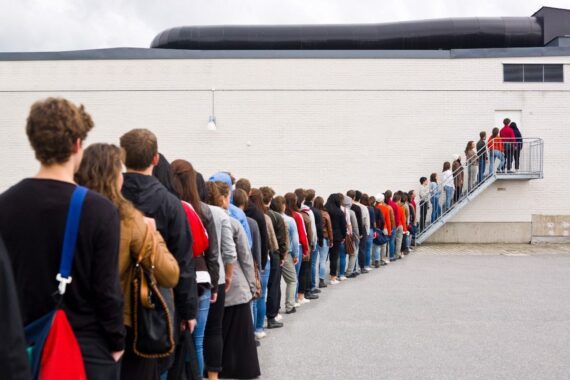The NHS waiting list will reach a high of 8 million next summer if current trends continue, regardless of strike action, according to new analysis.
A Health Foundation report, published today, has projected the future elective backlog based on four different scenarios – none of which achieve the expectations of the Government’s elective care recovery plan.
If current activity growth continues at 7.4% a year and there are no more strikes, the list will peak at around 8 million in August 2024 before dropping to 7.8 million by the end of the year, the think tank has found.
However, in another predicted scenario, if activity growth remains the same and strikes continue, the resulting list will be around 180,000 higher.
The Health Foundation also found that industrial action already taken by consultants and junior doctors has increased the waiting list by roughly 210,000, which equates to 3% of the overall list size.
Latest NHS figures show that as of August, 7.75 million people were waiting to start their first treatment, which is a record high.
At the start of last year, NHS England published the elective care recovery plan which reiterated the goal to deliver around 30% more elective activity by 2024/25 than before the pandemic, and set out an expectation to see the waiting list reducing by March 2024.
And in January this year, Prime Minister Rishi Sunak pledged that NHS waiting lists will fall, making it one of his five key priorities for 2023.
However, even in the Health Foundation’s ‘better-case scenario’, with hospital activity growth increasing by a third, the waiting list will only fall to below 7.2 million by the end of next year, which is the same level as when the PM made this pledge.
The report has also found that the monthly number of GP referrals to treatment, having returned to pre-pandemic levels, is in fact increasing at a faster rate than before.
This is down to patients who had put off seeking treatment during the pandemic now coming forward, according to the authors.
Although NHS secondary care is also increasing the number of treatments delivered each month, it cannot keep pace with the number of referrals.
Director of data analytics at the Health Foundation Charles Tallack said industrial action has only ‘directly resulted in a small increase’ to the waiting list, despite Government rhetoric.
He said: ‘Ministers have been quick to blame industrial action for the lack of progress in reducing the waiting list but the roots of this crisis lie in a decade of underinvestment in the NHS, a failure to address chronic staff shortages and the longstanding neglect of social care.
‘The pandemic heaped further significant pressure on an already stressed system but waiting lists were already growing long before Covid.’
Mr Tallack also said that returning waiting times to 18 weeks will be ‘very challenging’ but ‘entirely possible’ if the Government focuses on policy action and investment.
BMA chair of council Professor Philip Banfield said the new analysis shows that doctors ‘are not the ones to blame for the shameful backlog in NHS elective care’.
He said: ‘While there is no doubt that industrial action has had an effect on the ability to reduce waiting lists – something that could have been avoided entirely if the Government had come to the table willing to listen to doctors in the first place – it pales in comparison with a decade of failure of policy on the NHS from the top.
‘The Government needs to rethink its priorities: now is not the time to abandon patients in ideological stand-offs with the doctors who can materially improve the situation.’
Shadow health secretary Wes Streeting said the report ‘blows out of the water the Conservatives’ attempts to blame doctors and nurses’ for the NHS crisis.
‘Rishi Sunak’s failure to stop the strikes has only made a terrible situation worse, leaving even more patients waiting in pain and discomfort, unable to live their lives to the full,’ Mr Streeting added.
In August, the Prime Minister claimed that long NHS waiting lists were down to striking doctors, saying the industrial action is the reason patients have to wait for appointments.
And earlier this month, NHS England formally warned the BMA, saying strikes are now causing ‘significant disruption and risk to patients’.
The Government has recently agreed to meet with the BMA Consultants Committee in the hope of finding a resolution to the current dispute, which will be the first formal talks between the two parties since May.
The CQC’s recent report on the state of health and social care found that long hospital waiting lists create ‘avoidable’ GP workload as they have to manage people for longer.
Pulse October survey
Take our July 2025 survey to potentially win £1.000 worth of tokens













